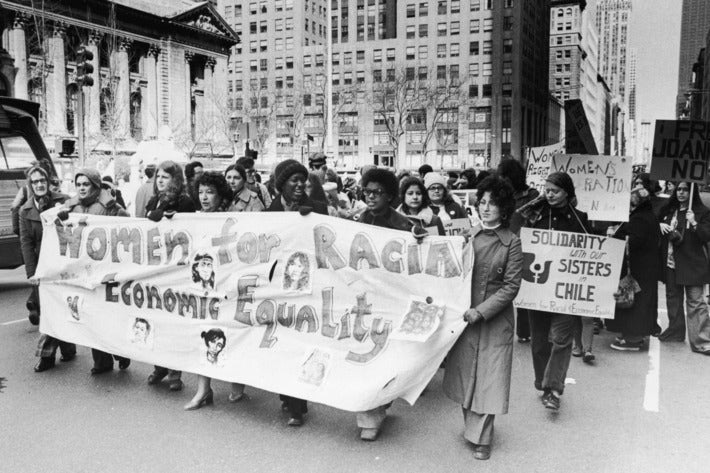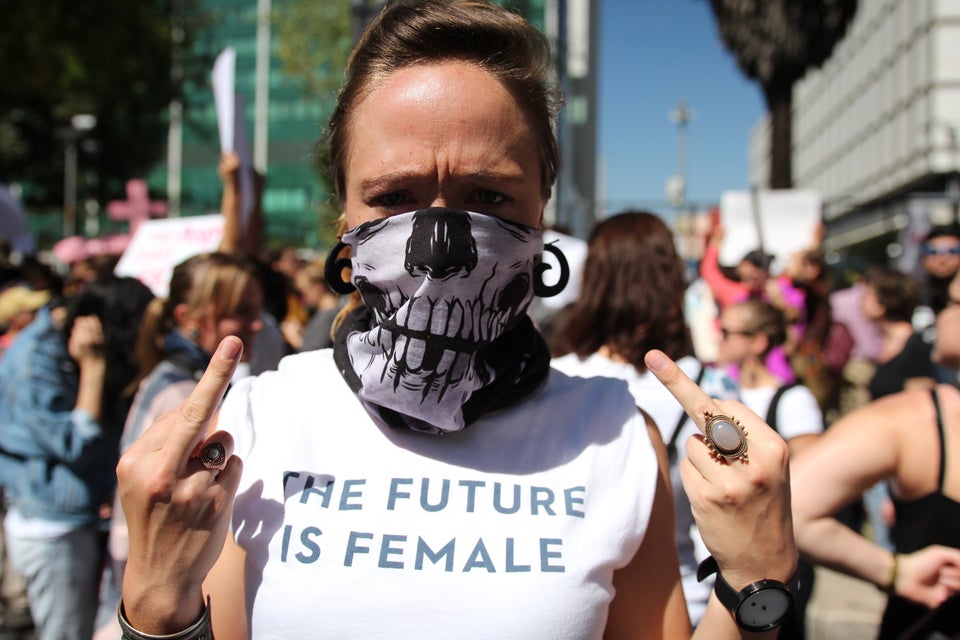
Never in a generation have women, people of color, and the LGBTQ community more dearly needed active allies to counter inequality. Unfortunately, the contours of active allyship are elusive to most Americans — even progressive ones. It’s not simply that it is easier to disapprove of bigotry passively than it is to actually do something about it. (Though it is.) It’s also that many people lack experience resisting the prejudice baked into American society.
But there are plenty of men and women who have long been committed to living the values of anti-racism, -sexism, and -homophobia who can teach us how to do better. In the weeks leading up to Donald J. Trump’s inauguration, I spoke to everyday activists — writers, lecturers, Sunday School teachers, and mothers — about how to support marginalized people and fight discrimination. Conspiring with marginalized people to beat back bigotry requires five things of would-be allies, they told me: learning, listening, speaking up, taking action, and being brave.
Learn.
People of color know full well the effect systemic racism has on their lives. They know its history, its hiding places, and where it intersects with other issues like class and gender. White supporters of people of color need to understand this, too, and they can start by seeking out information about race with the same attention and vigor they pay to other issues they care about.
Ashley Ray was motivated by her family to learn more about race: She is white, her husband of 17 years is black, and her children are biracial. She began teaching herself about racism and white supremacy as a way to be a better wife and mother. She started online, where several organizations devoted to social justice and equality have robust resource pages, including the Human Rights Campaign, Southern Poverty Law Center (SPLC), Conspire for Change, and Showing Up for Racial Justice.
She also sought out the actual voices of people of color. This is crucial, because most Americans live in a bubble: Seventy-five percent of white people, for instance, do not have non-white friends. This is why, Ray says, it is so important to listen to firsthand accounts of what it is like to be Latinx or Native or African-American or Asian in America. Allies should expand their media consumption to include outlets — like Colorlines, Ms., Bitch, The Advocate, and Black Girl Dangerous — that feature voices and reporting often ignored by mainstream media.
Listen.
And, Ray stresses, allies must “learn to believe these voices and understand that you’ve been conditioned not to. You have to make the choice to believe them.” It is a sad fact that women, people of color, and members of the LGBTQ community are often suspected of bias when speaking about their lived experiences and the real impact of inequity. Advocates have to challenge themselves to listen to marginalized people and to trust them, even when that means confronting their own prejudices and inaction.
Deanna Zandt, author and founder of Lux Digital, currently runs a blog called Ask Deanna About Racism But Only If You’re White. Deanna has always been a progressive and an ardent feminist, but finding her race politics took some soul-searching — prompted when she was chastised for talking the talk without walking the walk.
“I am part of the Women, Action, and the Media (WAM!) community. We had a conference where during and afterward a bunch of women of color, and then queer women of color specifically, spoke up publicly about not feeling included or welcome,” she explains. Feelings hurt, she responded to the complaints with defensiveness.
“One of the things that happened during that process is I realized that everything that had ever been said to me by [men] about gender, I was in my head saying to these women of color about race,” she remembers.
That experience led Zandt to reflect on the ways she’d failed to intervene in black women’s erasure from feminist spaces, and how she had been denying her own race-related blind spots.
Ray also acknowledges that being called out for race bias still sometimes prompts feelings of defensiveness — a very human reaction. But, like Zandt, over time, she has learned the most helpful response as an ally is to be quiet, listen, and examine the charge. Ray says, “Most of the time if something is getting called out, it needs to be called out.”
Speak Up.
An ally’s ability to speak up for marginalized people to other privileged people is perhaps the most valuable thing they have to offer.
“It’s very effective for boys and men to hear other boys and men speak out against violence against women,” says Byron Hurt, an activist and filmmaker whose documentary Hip Hop: Beyond Beats and Rhymes examines toxic masculinity. Hurt says that men who support women give other men permission to think about themselves and women in a different way. This proactive advocacy by men is imperative, because sexism is men’s problem to solve, he says: “[Men] can’t expect women to fight all of the battles around sexism.”
Likewise, says Terri Kempton, “racism is a white problem created by white people to benefit white people and it needs white people to change it,” she says. White Nonsense Roundup, the group she co-founded four months ago, is a collection of mostly white people trying to educate other white people about issues of race and privilege. The group serves as an “on-call service” for people of color who are experiencing harassment or are embroiled in tough racial discussions with white people online. “They can tag us or they can use our handle on Twitter and call us into a conversation and we will take over some of the education piece so the burden doesn’t perpetually fall on people of color.”
The other part of the group’s work is coaching white people in having conversations about race with friends and family — for instance, teaching them how to push back on offensive jokes. (Kempton says not to laugh, but to put the burden of proof on the joke teller to explain why they believe their comment is funny. She also suggests leveraging common ground and shared culture. For example, reminding a dedicated mom of her love for her kids may help her understand why immigrant parents also want the best for their children. And, she says, it’s okay to prepare snappy comebacks in advance or to circle back if you get tongue-tied when incidents occur.)
Take Action.
Most Americans are not activists. And not all people can take the same risks. But everyone can work within their sphere of influence to make change.
“There is a part of me that wanted to leave my job and go to Standing Rock,” says Dr. Liza Talusan, an educator, facilitator, activist and writer. “[I] wanted to block the highway or do a ‘die-in,’ at City Hall. [But] I totally admit that’s not me. My capacity is doing it through the systems of education.”
Talusan said that for her — a straight woman who’s motivated to support gay and trans equality because of her Catholic faith — that means, in part, being a resource for “religious institutions looking to be more inclusive of LGBT communities” and visiting Catholic schools to talk about gay and trans inclusion. While these actions align with her profession in diversity education, Talusan also acts on her values in everyday life: for instance, by “disrupting norms” when she teaches Sunday school, using inclusive language that acknowledges different family structures.
Be brave.
These things are not always comfortable. But Ray says that allyship means “committing to pushing past the point of comfort to take effective and impactful action to change things” — even if that action is messy or dangerous. A willingness to take risks is non-negotiable. Kempton says that to be an ally requires “bravery.”
Whatever their discomfort, good people must intercede, for instance, when they see a Muslim woman being harassed for wearing a hijab. Maeril, a French art director and filmmaker, created an illustrated guide to standing up to public Islamophobia and other harassment: Sit beside the person being harassed and engage them in conversation, ignoring the attacker. Maintain eye contact with the victim and continue the conversation until the attacker is starved of attention and leaves. Escort the victim to a neutral area where they can collect themselves. Respect their wishes if they say they are okay and just wish to leave.
Speaking out against bigotry and inequality can come with a personal sacrifice. Jackson Katz, an educator, filmmaker, author, and creator of Mentors in Violence Prevention (which works on gender violence prevention), says that people working in solidarity with marginalized groups “give up the ease of interaction with people in [their] own group.” Dr. Damon Berry, a professor of religious studies, says that in some cases he’s lost relationships with friends and family, “because there was just no space for us to develop any understanding of each other.” At the same time, he’s gained “deep friendships and real, profound connections” with people different from himself. “You learn things about them, they teach you things about yourself, and you support one another and you care for one another,” he said. “To me, that’s what a society should be.”
Looking ahead to a Trump presidency, the moral imperative to do what’s right has to override the costs. “People who want to perform allyship are really going to have to consider what they would risk,” Berry says. “There may come a time where one is called upon to sacrifice economic comforts, to sacrifice even physical safety. And if you are not willing to sacrifice those things, and more, perhaps — to stand for what you believe in and the commitment you made — then you don’t have the courage of your convictions. Perhaps you never believed it at all.”
More from The Cut:

